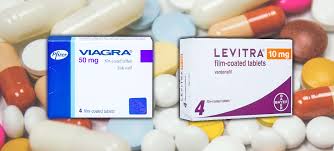
Eliquis: The Blood Thinner You Should Know About
Eliquis, or apixaban, is an oral anticoagulant that plays a vital role in managing conditions related to abnormal blood clot formation. Commonly prescribed for the prevention of stroke in patients with atrial fibrillation, Eliquis is gaining popularity in the medical community due to its efficacy and relatively favorable side effect profile. For those considering usage, you may want to explore purchase options through trusted sources. Check this link for more information:
Eliquis https://farmakeioorama.gr/agoraste-eliquis-se-apeytheias-syndesi-choris-syntagi/.
How Eliquis Works
Eliquis functions by inhibiting Factor Xa, an essential component of the coagulation process that leads to clot formation. By blocking this factor, Eliquis helps maintain proper blood flow and reduces the likelihood of strokes and other serious complications arising from blood clots. This mechanism of action is consistent with other direct oral anticoagulants (DOACs), providing an alternative to older anticoagulants like warfarin.
Indications for Use
Eliquis is indicated for several medical conditions, including:
- Prevention of stroke and systemic embolism in patients with nonvalvular atrial fibrillation
- Treatment of deep vein thrombosis (DVT) and pulmonary embolism (PE)
- Reduction of the risk of recurrent DVT and PE after initial treatment
- Prophylaxis of DVT following hip or knee replacement surgery

Dosing Information
The dosing of Eliquis is generally flexible and does not typically require ongoing blood monitoring, unlike warfarin. The common initiation dose for patients with nonvalvular atrial fibrillation is 5 mg twice daily, although it may be reduced to 2.5 mg twice daily based on specific criteria such as age, weight, and renal function. Adhering to your healthcare provider’s instructions regarding dosing is crucial for achieving desired therapeutic outcomes.
Benefits of Eliquis
There are multiple benefits to choosing Eliquis over traditional anticoagulants:
- Reduced Risk of Stroke: Clinical studies have shown that Eliquis effectively lowers the risk of both ischaemic and hemorrhagic strokes in patients with atrial fibrillation.
- Convenience: Being an oral medication with no requirement for routine coagulation monitoring makes Eliquis a convenient choice for many patients.
- Lower Risk of Food and Drug Interactions: Unlike warfarin, Eliquis has fewer dietary restrictions and is less likely to interact with other medications.
Possible Side Effects
Like any medication, Eliquis may cause side effects. The most notable concern is the increased risk of bleeding since it inhibits the blood’s ability to clot. Common side effects may include:
- Minor bleeding (e.g., nosebleeds, bleeding gums)
- Severe bleeding (e.g., gastrointestinal bleeding, intracranial hemorrhage)
- Other adverse reactions such as nausea, anemia, or rash
Patients are advised to seek medical attention if they experience severe side effects or signs of bleeding, such as persistent headaches, dizziness, or blood in urine or stools.

Interactions with Other Medications
It’s essential to inform your healthcare provider of all medications you are currently taking. Eliquis may interact with other drugs, including:
- Antiplatelet agents (e.g., aspirin, clopidogrel)
- Nonsteroidal anti-inflammatory drugs (NSAIDs)
- Certain antifungal medications
- Antiretroviral drugs
Monitoring for signs of bleeding is particularly crucial during co-administration of Eliquis with these medications.
Proper Usage and Monitoring
To maximize the benefits of Eliquis while minimizing risks, adhere to these guidelines:
- Take Eliquis exactly as prescribed, and do not skip doses.
- Avoid abrupt discontinuation unless advised by your healthcare professional.
- Attend regular check-ups and inform your doctor of any changes in your health status.
- Maintain an up-to-date list of all medications and supplements you take.
Conclusion
Eliquis presents a modern solution for individuals requiring anticoagulation therapy. With its efficacy, ease of use, and reduced monitoring requirements, it continues to gain acceptance in clinical practice. However, it is imperative to understand the potential risks and side effects associated with its use. Consulting your healthcare provider is crucial for individual assessments and tailored advice.

